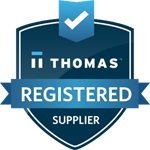179D Tax Deduction Energy Modeling
The 179D tax deduction or more commonly known as the Energy Efficient Commercial Buildings Deduction encourages the implementation of energy-efficient building systems in the United States under its tax code. This comes under the Energy Policy Act of 2005. Under Section 179D of the US tax code, owners of commercial buildings or primary designers have the chance to claim a tax deduction for properties that are created energy-efficiently. There are specific standards of energy efficiency that are to be met to get tax benefits.
Commercial buildings in the United States contribute significantly to energy consumption. Cutting taxes is a way by which the federal government reduces energy consumption and also encourages the construction of more energy-efficient buildings.

Our role in helping you with the 179D Tax Deduction?
Energy modeling is a complex task that needs specific software that analyzes and simulates the performance of the building. It helps calculate energy savings that are reached due to the implementation of certain energy-efficient techniques.
MaRS Trans USA provides energy modeling using software that is approved by DOE. We adhere to the energy codes and ASHRAE 90.1 Standard reference given by USGBC in the LEED building certification program. This is used for validation of energy efficiency so that our clients get a 179D energy-efficient tax deduction as quickly as possible. We use the best available software in the market to ensure that this is highly possible without any hassle.
Section 179D states that the owner of the building is eligible for a tax deduction for energy-efficient techniques be it in the lighting, HVAC system, building envelope, or hot water systems in the commercial building. The energy modeling procedure consists of feeding in the raw building data that includes the HVAC systems, insulation, architectural plans, lighting systems, and similar other necessary pieces of information into the software.



